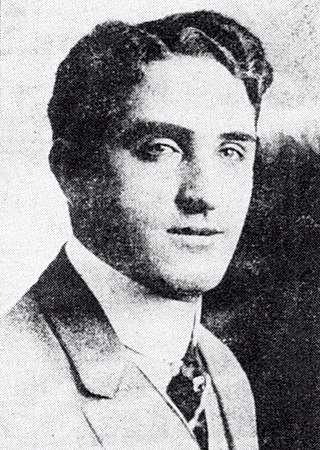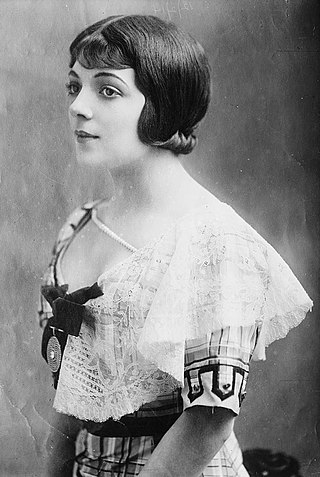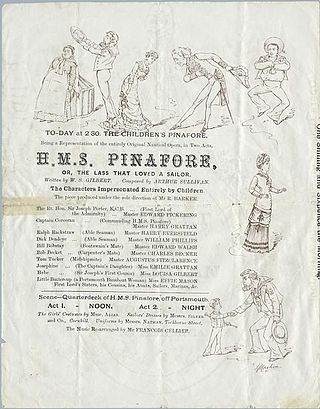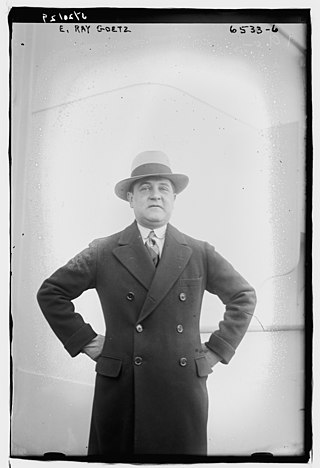Related Research Articles
Ragtime, also spelled rag-time or rag time, is a musical style that had its peak from the 1890s to 1910s. Its cardinal trait is its syncopated or "ragged" rhythm. Ragtime was popularized during the early 20th century by composers such as Scott Joplin, James Scott and Joseph Lamb. Ragtime pieces are typically composed for and performed on piano, though the genre has been adapted for a variety of instruments and styles.

Henry Sterling Creamer was a popular song lyricist and theater producer. He was born in Richmond, Virginia, and died in New York. He co-wrote many popular songs in the years from 1900 to 1929, often collaborating with Turner Layton, with whom he also appeared in vaudeville. He was African American.
Shelton Brooks was a Canadian-born African American composer and performer of popular music and jazz. He was known for his ragtime and vaudeville style, and wrote some of the biggest hits of the first third of the 20th century; including "Some of These Days" and "At the Darktown Strutters' Ball". He composed "Some of These Days" at the Pekin Theatre.

Jean Schwartz was a Hungarian-born Jewish American composer and pianist. He is best known for his work writing the scores for more than 30 Broadway musicals, and for his creation of more than 1,000 popular songs with the lyricist William Jerome. Schwartz and Jerome also performed together on the vaudeville stage in the United States; sometimes in collaboration with Maude Nugent, Jerome's wife, and the Dolly Sisters. Schwartz was married to Jenny Dolly from 1913-1921.

Anne Marsh Caldwell, also known as Anne Caldwell O'Dea, was an American playwright and lyricist. She wrote both pop songs and Broadway shows, sometimes working with composer Jerome Kern.

The Ziegfeld Follies were a series of elaborate theatrical revue productions on Broadway in New York City from 1907 to 1931, with renewals in 1934, 1936, 1943, and 1957. They became a radio program in 1932 and 1936 as The Ziegfeld Follies of the Air.

Van and Schenck were popular American entertainers in the 1910s and 1920s: Gus Van, baritone, and Joe Schenck (pronounced "skenk"; born Joseph Thuma Schenck,, tenor. They were vaudeville stars and made appearances in the Ziegfeld Follies of 1918, 1919, 1920 and 1921. They made numerous phonograph records for the Emerson, Victor, and Columbia record companies.

Louis Wolfe Gilbert was a Russian-born American songwriter of Tin Pan Alley. He is best remembered as the lyricist for "Ramona" (1928), the first movie theme song ever written.
Maurice Abrahams was an American songwriter and music publisher, who was successful in the early years of the 20th century.

Irène Bordoni was a Franco-American actress and singer.
Ballard MacDonald was an American lyricist, who was one of the writers of Tin Pan Alley.

Harry Grattan was a British stage actor, singer, dancer and writer best known for his performances in musical comedies in the decades around 1900.
Hitchy-Koo of 1919 is a musical revue with music and lyrics by Cole Porter and a book by George V. Hobart. This revue was third in a series of four Hitchy-Koo Broadway revues from 1917 to 1920 produced by, and starring, Raymond Hitchcock. The revues were named after the 1912 popular song "Hitchy-Koo" by composers Lewis F. Muir and Maurice Abrahams with lyrics by L. Wolfe Gilbert; the only song which was featured in all of the Hitchy-Koo revues. The original Broadway production of this version played in 1919. The revue received favourable reviews.

Edward Ray Goetz was an American composer, lyricist, playwright, theatre director, and theatrical producer. A Tin Pan Alley songwriter, he published more than 500 songs during his career, many of them originally written for the New York stage. His songs were recorded by several artists, including Judy Garland, Al Jolson, and Blossom Seeley. He was active as both a lyricist and composer for Broadway musicals from 1906 through to 1930, collaborating with artists like George Gershwin, Cole Porter, Sigmund Romberg, and A. Baldwin Sloane to create material for the theatre.
Miss 1917 is a musical revue with a book by Guy Bolton and P. G. Wodehouse, music by Victor Herbert, Jerome Kern and others, and lyrics by Harry B. Smith, Otto Harbach, Henry Blossom and others. Made up of a string of vignettes, the show features songs from such musicals as The Wizard of Oz, Three Twins, Babes in Toyland, Ziegfeld Follies and The Belle of New York.
Jesse C. Huffman (1869–1935) was an American theatrical director. Between 1906 and 1932 he directed or staged over 200 shows, mostly for the Shubert Brothers. Many of them were musical revues, musicals or operettas. He is known for The Passing Show series of revues that he staged from 1914 to 1924 at the Winter Garden Theatre on Broadway, daring alternatives to the Ziegfeld Follies.

"I May Be Gone for a Long, Long Time" is a World War I era song released in 1917. It was featured in the 1917 stage production of Raymond Hitchcock and E. Ray Goetz's Hitchy-Koo. Lew Brown wrote the lyrics. Albert Von Tilzer composed the music. The song was published by Broadway Music Corp. of New York, New York. André De Takacs designed the sheet music cover. It features Grace La Rue's image blended into the clouds of an ocean scene. The song was written for both voice and piano.
Seymour Furth was an American songwriter, composer, and librettist active from the late 1890s until his death in 1932. He wrote popular songs for Broadway musicals, vaudeville, tin pan alley, and minstrel shows; notably creating the opening musical number for the first Ziegfeld Follies in 1907. He most frequently worked as a composer with another collaborator serving as his lyricist, but sometimes he created both music and lyrics, and at other times just words with other composers. He composed piano works in popular styles of his day, including ragtime. His best known songs were comedic, including "Nothing Like That in Our Family" (1906) and "No Wedding Bells For Me" (1907).
References
- 1 2 Sime (October 4, 1912). World of Pleasure. Vol. 28. p. 22.
{{cite book}}:|work=ignored (help) - 1 2 Larkin, p. 22
- 1 2 Cullen, Frank, Hackman, Florence, McNeily, Donald. Vaudeville, Old & New (2007), Routledge, ISBN 0-415-93853-8, p. 798; and Suskin, p. 20
- ↑ "Songs Publishers Are Boosting". Billboard . Vol. 24, no. 43. October 5, 1912. p. 16.
- ↑ Golden, chapter: "Everybody's Doing It"
- 1 2 3 4 Whitcomb, chapter: "Invasion"
- ↑ Appelbaum, chapter: "Hitchy-Koo"
- ↑ Brooks and Rust, p. 55
- ↑ Goldman, p. 233
- ↑ Burton, Freeman and Freeman, p. 213
- ↑ Inwood, chapter: Music and Dancing
- ↑ Rust and Forbes, p. 1139
- ↑ Stubblebine, pp. 136, 341
- ↑ Scott, p. 247
- ↑ Hitchy-Koo 1917, ibdb.com
- ↑ "Hitchy-Koo Wins By Its Originality; Raymond Hitchcock Opens His Own Revue with Sallies from an Auditorium Seat". The New York Times . June 8, 1917. p. 9.
- ↑ Hitchy-Koo 1918 ibdb.com
- ↑ "Hitchy-Koo of 1919", sondheimguide.com, accessed 20 December 2013
- ↑ Hitchy-Koo 1920 ibdb.com